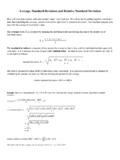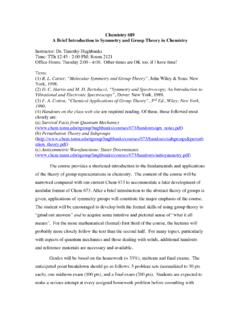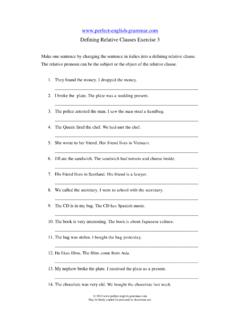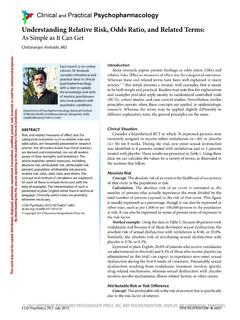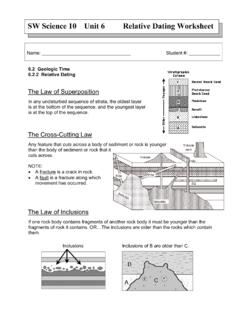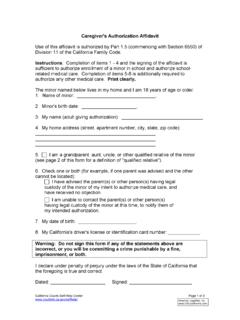Transcription of Average, Standard Deviation and Relative Standard Deviation
1 Average, Standard Deviation and Relative Standard Deviation How will your data compare with other people s data? Let s find out. We will do this by pulling together everybody s data, then calculating the average, Standard Deviation , and Relative Standard Deviation . You can then compare your data with the average of everybody s data. The average result, x , is calculated by summing the individual results and dividing this sum by the number (n) of individual values: x = x1 + x2 + x3 + x4 + ..n The Standard Deviation is a measure of how precise the average is, that is, how well the individual numbers agree with each other. It is a measure of a type of error called random error - the kind of error people can t control very well. It is calculated as follows: Standard Deviation , S = (x1 - x )2 + (x2 - x )2 + (x3 - x )2 +.
2 N - 1 The Relative Standard Deviation (RSD) is often times more convenient. It is expressed in percent and is obtained by multiplying the Standard Deviation by 100 and dividing this product by the average. Relative Standard Deviation , RSD = 100S / x Example: Here are 4 measurements: , , and Calculate the average, Standard Deviation , and Relative Standard Deviation . average, x = + + + = = Standard Deviation , S = ( - )2 + ( - )2 + ( - )2 + ( - )24 - 1 = ( )2 + ( )2 + ( )2 + ( )23 = + + + = = Relative Standard Deviation , RSD = 100S / x = x 100 = Our final result for this example can be written as or
